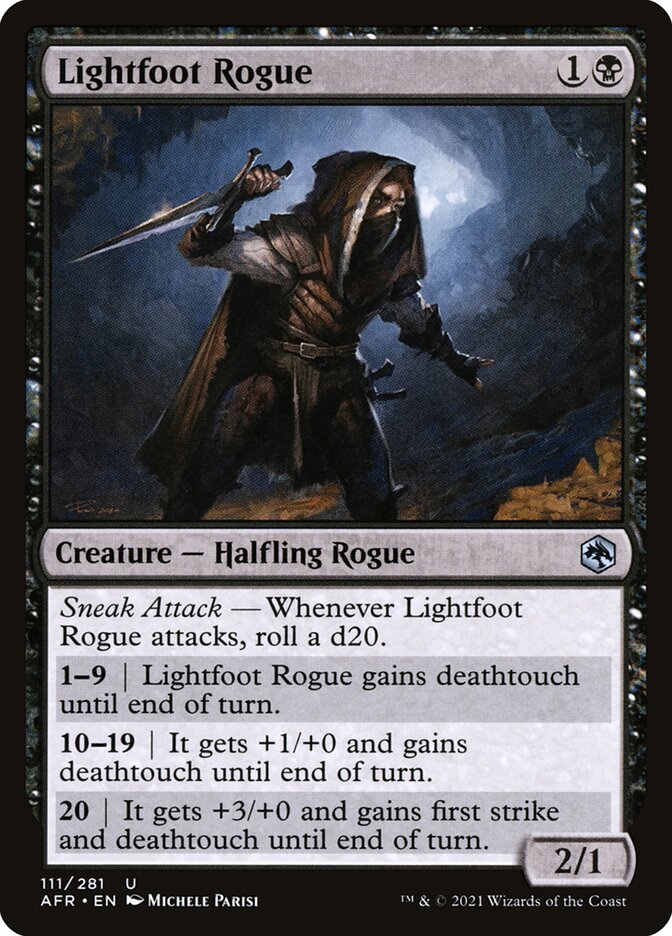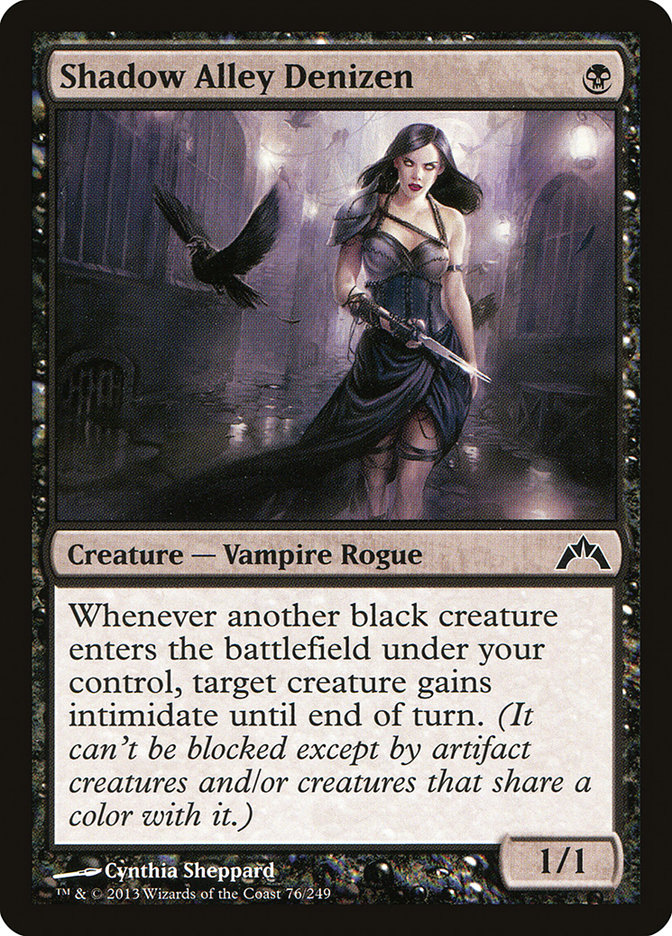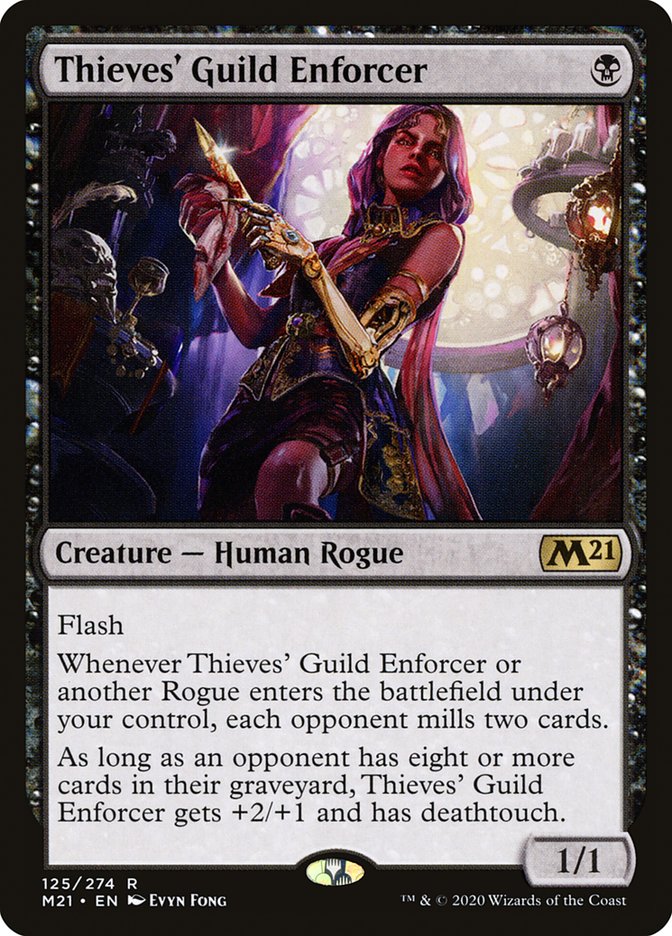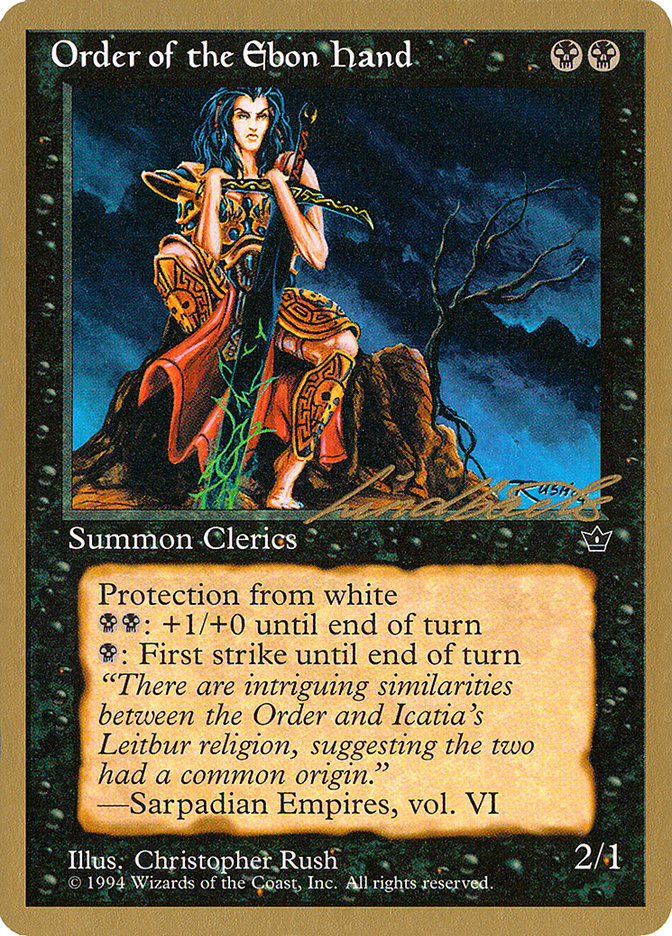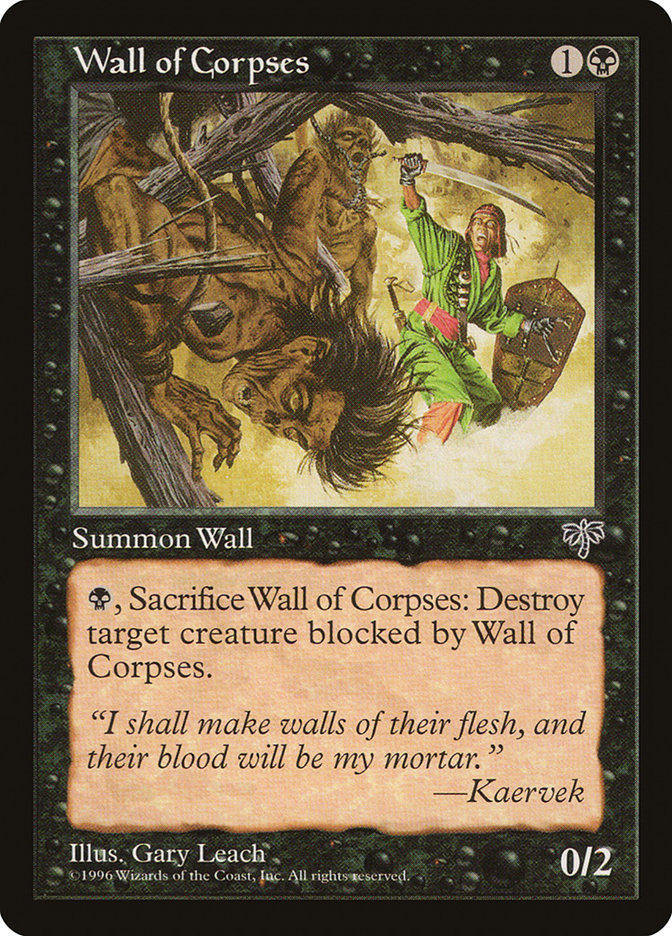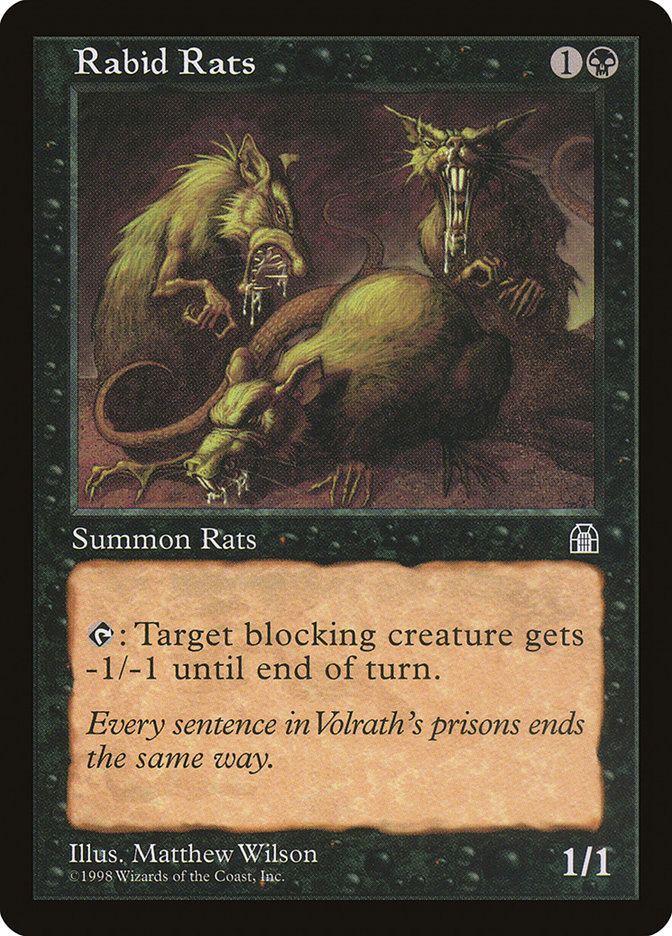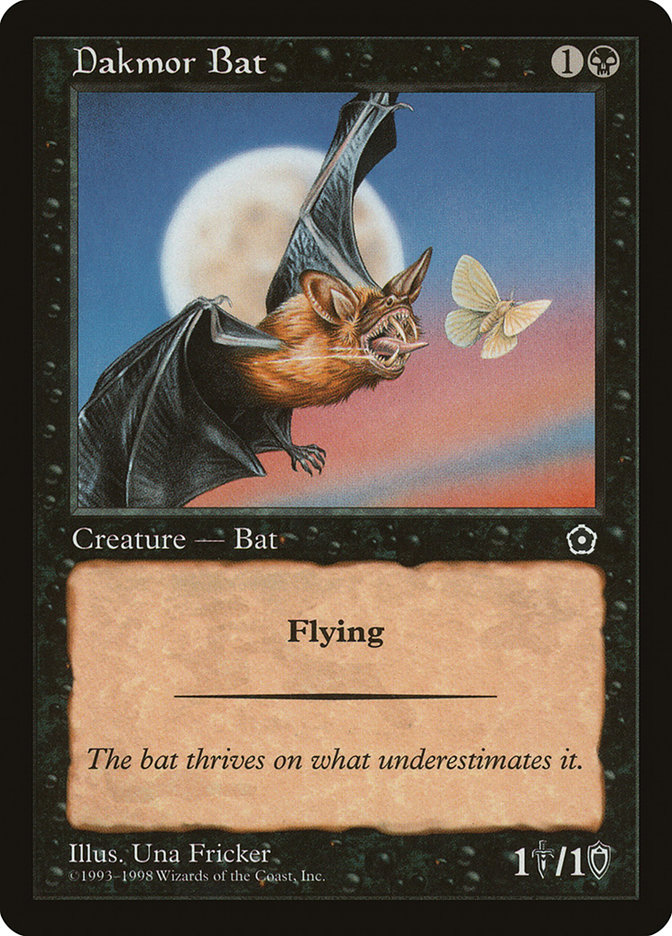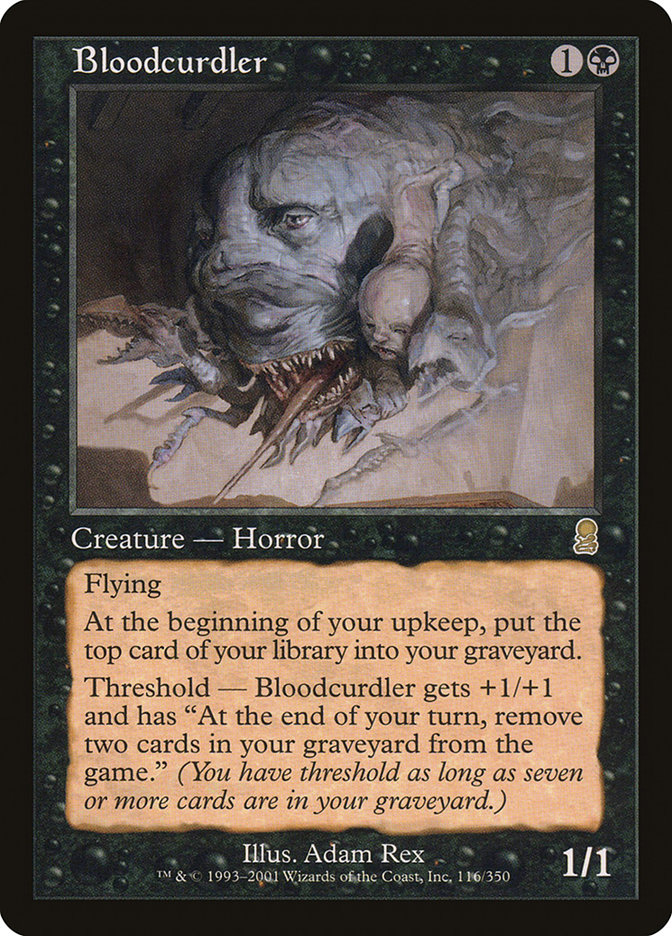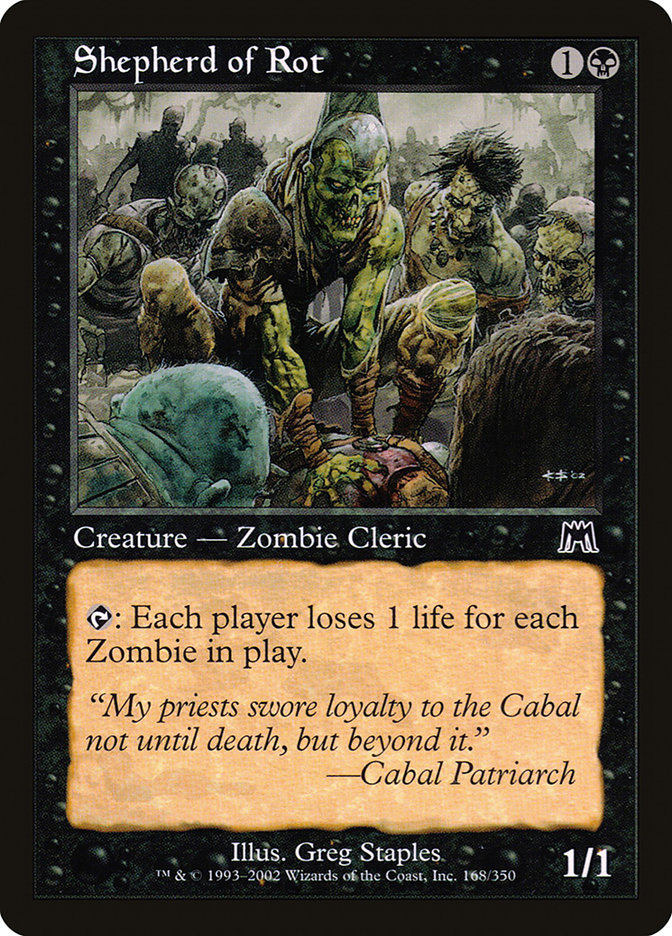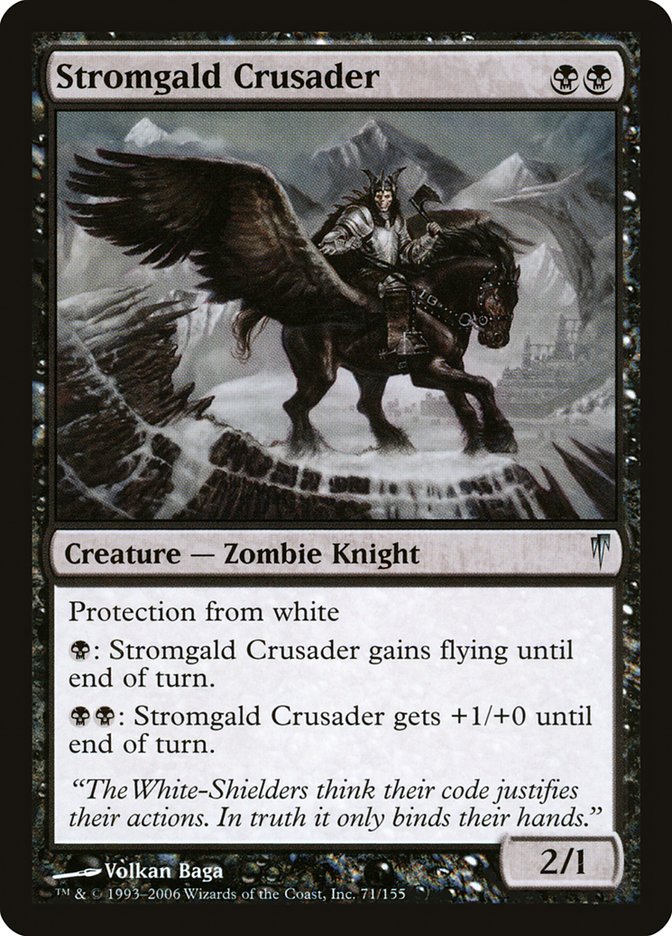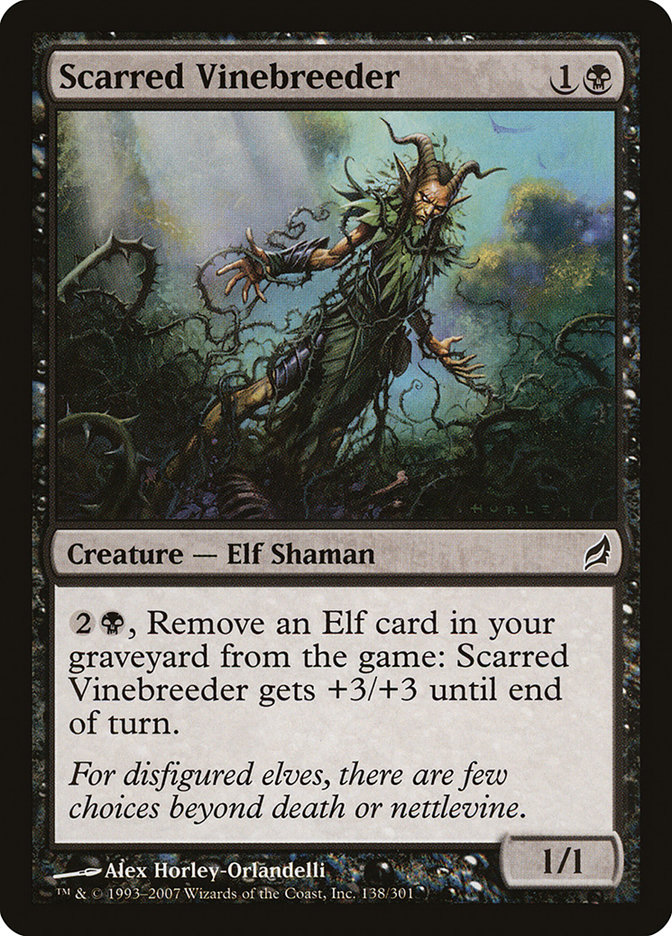Pícaro piesligeros Carta MTG
| El coste de maná | |
| Costo de maná convertido | 2 |
| Rareza | Poco común |
| Tipo | Criatura — Bribón mediano |
| Liberado | 2021-07-23 |
| Coleccione símbolo | |
| Coleccione nombre | Adventures in the Forgotten Realms |
| Coleccione código | AFR |
| Fuerza | 2 |
| Tenacidad | 1 |
| Número | 111 |
| Frame | 2015 |
| Disposición | Normal |
| Border | Negra |
| Ilustrado por | Michele Parisi |
Texto de la carta
Ataque furtivo — Siempre que el Pícaro piesligeros ataque, tira 1d20. 1—9 | El Pícaro piesligeros gana la habilidad de toque mortal hasta el final del turno. 10—19 | Obtiene +1/+0 y gana la habilidad de toque mortal hasta el final del turno. 20 | Obtiene +3/+0 y gana las habilidades de dañar primero y toque mortal hasta el final del turno.
Cartas Similares
El Pícaro Piesligeros de los reinos de Magic: The Gathering aporta dinámicas interesantes como carta de criatura. Al adentrarnos en el mundo de las criaturas pícaras, podemos establecer paralelismos con el Bandido Noggle. Ambos tienen la habilidad de ser inbloqueables por criaturas con poder 2 o menos, lo cual puede ser crucial para colar ese daño crítico de combate. El Pícaro Piesligeros, en particular, destaca con su mecánica de lanzamiento de dados que añade variabilidad y potencial para diferentes resultados de combate.
El Residente del Callejón de las Sombras es otro pariente, ofreciendo una ventaja sigilosa al dar a otras criaturas negras que controles la oportunidad de pasar desapercibidas ante las defensas cuando entran al campo de batalla. Sin embargo, carece de la manipulación directa de combate que provee el Pícaro Piesligeros. En comparación, el Cumplidor del Gremio de Ladrones impacta al volverse más fuerte a medida que se añaden más cartas al cementerio del oponente, recompensando una estrategia a largo plazo frente a la ventaja táctica inmediata de la característica de lanzamiento de dados del Pícaro Piesligeros.
Al analizar a estos aventureros, el Pícaro Piesligeros se mantiene como una opción versátil e impredecible para los jugadores de MTG que aprecian un elemento de azar y adaptabilidad en el campo de batalla.
Cartas similares a Pícaro piesligeros por color, tipo y coste de maná
Aspectos Positivos
Ventaja de Cartas: La habilidad única de Lightfoot Rogue puede filtrar tu mazo con cada combate, ofreciendo la oportunidad de descubrir hechizos clave o tierras para mantener la ventaja contra los oponentes.
Aceleración de Recursos: Aunque no es un acelerador de recursos directo, la destreza de este pícaro puede perturbar el flujo de tu adversario, preservando indirectamente tus recursos al inclinar los resultados del combate a tu favor.
Velocidad Instantánea: La agilidad de la habilidad activada de esta carta se alinea con las ventajas de las acciones de velocidad instantánea. Al activarse durante la fase de combate, permite ajustes estratégicos en pleno fragor de la batalla, manteniendo a los oponentes en la incertidumbre y adaptándose en el momento preciso.
Aspectos Negativos
Requisito de Descarte: La jugabilidad de Lightfoot Rogue puede verse afectada por la necesidad de descartar una carta para activar ciertas habilidades. Esto podría poner a los jugadores en desventaja, especialmente cuando su mano ya tiene pocas cartas, privándolos de estrategias o recursos clave.
Costo de Mana Específico: Requiere una combinación precisa de mana para lanzarse, por lo que Lightfoot Rogue puede no encajar perfectamente en mazos multicolores. Su dependencia del mana negro restringe la variedad de mazos donde puede jugarse efectivamente, limitando su versatilidad en diferentes estilos de juego.
Costo de Mana Comparativamente Alto: Con una inversión total de mana que podría considerarse elevada en relación con su impacto en el juego, Lightfoot Rogue no siempre podría ser la elección óptima. Los jugadores podrían encontrar otras criaturas o hechizos que proporcionen una mayor ventaja o presencia en el tablero por el mismo o incluso menor costo de mana.
Razones para Incluir a Lightfoot Rogue en tu Colección
Versatilidad: Lightfoot Rogue aporta un nivel de adaptabilidad a tus construcciones, encajando cómodamente en mazos pícaros y basados en destreza. Su naturaleza modular permite jugadas impactantes independientemente del estado del tablero, adaptándose a una variedad de planes de juego y estrategias.
Potencial de Combo: La habilidad única de la carta para lanzar dados complementa sinergias con otras cartas que se benefician de la aleatoriedad o fases de combate adicionales. Esta capacidad crea combinaciones dinámicas e inesperadas que pueden inclinar la balanza a tu favor.
Relevancia en el Meta: Dado su bajo coste de lanzamiento y tipos de criatura relevantes, Lightfoot Rogue se alinea bien con estrategias agresivas que son prominentes en ciertos metajuegos. Su capacidad para infligir daño rápidamente o crear situaciones ventajosas puede cambiar por completo el juego contra mazos más lentos y controladores.
Cómo Vencer
Lightfoot Rogue, aunque sigiloso y potente en combate, tiene vulnerabilidades que pueden ser explotadas en Magic: The Gathering. Esta criatura elusiva prospera al lanzar dados para aumentar su poder, convirtiéndose potencialmente en una amenaza significativa si se le deja desatendido. Para contrarrestar eficazmente a Lightfoot Rogue, considera emplear hechizos de eliminación a velocidad instantánea que puedan lanzarse después de que se activen las habilidades del pícaro pero antes del paso de daño de combate. De esta forma, puedes evitar la imprevisibilidad de los dados y eliminar la amenaza de inmediato.
Los hechizos de eliminación instantánea pueden ser una respuesta directa a Lightfoot Rogue. Considera Swift End o Heartless Act, que te permiten apuntar y destruir a la criatura sin participar en combate. Adicionalmente, hechizos de eliminación masiva como Ira de Dios o Condenación pueden limpiar el tablero de Lightfoot Rogue junto con cualquier amenaza acompañante. Prevenir los beneficios de lanzar dados en su totalidad es otra estrategia. Deshabilitar habilidades con cartas como Phyrexian Revoker o prevenir trucos de combate por completo con Árbitro Silente puede neutralizar las ventajas de Lightfoot Rogue. La planificación estratégica junto con una eliminación bien cronometrada mantendrá a este ágil adversario firmemente en las sombras.
Donde comprar
Si estás buscando comprar una carta MTG Pícaro piesligeros de un coleccione específico como Adventures in the Forgotten Realms, existen varias opciones confiables que debes considerar. Una de las fuentes principales es tu tienda de juegos local, donde a menudo puedes encontrar paquetes de refuerzo, cartas individuales y mazos preconstruidos de colecciones actuales y pasadas. A menudo ofrecen el beneficio adicional de una comunidad donde puedes intercambiar con otros jugadores.
Para un inventario más amplio, particularmente de colecciones más antiguos, mercados en línea como TCGPlayer, Card Kingdom y Card Market ofrecen amplias selecciones y te permiten buscar cartas de colecciones específicos. Las plataformas de comercio electrónico más grandes como eBay y Amazon también tienen listados de varios vendedores, lo que puede ser un buen lugar para buscar productos sellados y hallazgos raros.
Además, el sitio oficial de Magic suele tener un localizador de tiendas y listas de minoristas para encontrar Wizards of the Productos con licencia costera. Recuerde comprobar la autenticidad y el estado de las cartas al comprarlas, especialmente a vendedores individuales en mercados más grandes.
A continuación se muestra una lista de algunos sitios web de tiendas donde puede comprar las Pícaro piesligeros y otras cartas MTG:
 COMPRAR
COMPRAR BurnMana es un socio oficial de TCGPlayer
- eBay
- Card Kingdom
- Card Market
- Star City Games
- CoolStuffInc
- MTG Mint Card
- Hareruya
- Troll and Toad
- ABU Games
- Card Hoarder Magic Online
- MTGO Traders Magic Online
Ver productos MTG
Legalidades
Formatos de Magic the Gathering donde Pícaro piesligeros tiene restricciones
| Formato | Legalidad |
|---|---|
| Historicbrawl | Legal |
| Historic | Legal |
| Legacy | Legal |
| Paupercommander | Restringido |
| Oathbreaker | Legal |
| Gladiator | Legal |
| Pioneer | Legal |
| Commander | Legal |
| Modern | Legal |
| Vintage | Legal |
| Duel | Legal |
| Explorer | Legal |
| Timeless | Legal |
Reglas e información
La guía de referencia para las reglas de las cartas Pícaro piesligeros de Magic: The Gathering proporciona las reglas oficiales, las erratas emitidas, así como un registro de todas las modificaciones funcionales que se han producido.
| Fecha | Texto |
|---|---|
| 23/07/2021 | Una habilidad que te indica que tires un dado también especificará qué hacer con el resultado de ese lanzamiento. La mayoría de las veces, esto se hace en forma de una "tabla de resultados" en el texto de la carta. |
| 23/07/2021 | Un efecto que dice "elige un objetivo, luego lanza un d20" o similar todavía utiliza el proceso normal de poner una habilidad en la pila y resolverla. Elegir objetivos es parte de poner la habilidad en la pila y lanzar el d20 ocurre más tarde, cuando la habilidad se resuelve. |
| 23/07/2021 | Los dados se identifican por el número de caras que tiene cada uno. Por ejemplo, un d20 es un dado de veinte caras. |
| 23/07/2021 | Los dados utilizados deben tener resultados igualmente probables y el lanzamiento debe ser justo. Aunque se recomiendan los dados físicos, se permiten sustitutos digitales, siempre que tengan el mismo número de resultados igualmente probables que los especificados en la instrucción original de lanzamiento. |
| 23/07/2021 | Algunas habilidades, como la de Guía de Hadas y la Clase Bárbara, reemplazan lanzar un dado con lanzar dados adicionales e ignorar el menor resultado. Los resultados ignorados no se consideran para el efecto que te indicó que lanzaras un dado, y no activan habilidades. Para todos los propósitos, una vez que determines qué dados cuentan, los dados adicionales nunca se lanzaron. |
| 23/07/2021 | Algunos efectos te indican que vuelvas a tirar. Esto utiliza el mismo número y tipo de dados que la tirada original, y esa tirada utilizará el mismo conjunto de posibles resultados. |
| 23/07/2021 | Algunos efectos pueden modificar el resultado de una tirada de dado. Esto puede ser parte de la instrucción para tirar un dado o puede provenir de otras cartas. Cualquier cosa que haga referencia al "resultado" de una tirada de dado está buscando el resultado después de estas modificaciones. Cualquier cosa que esté buscando el "resultado natural" está buscando el número mostrado en la cara del dado antes de estas modificaciones. |
| 23/07/2021 | Las instrucciones para lanzar un dado y el efecto que ocurre debido al resultado son parte de la misma habilidad. Los jugadores no tienen la oportunidad de responder a la habilidad después de conocer el resultado del lanzamiento. |
| 23/07/2021 | Los eventos de torneo tienen reglas más específicas con respecto a los dados y lanzamiento de dados. Para obtener más información, consulte la versión más reciente de las Reglas del Torneo de Magic en https://wpn.wizards.com/en/document/magic-gathering-tournament-rules. |
| 23/07/2021 | Durante el juego de Planechase, lanzar el dado de plano hará que se active cualquier habilidad que se active cada vez que un jugador lance uno o más dados. Sin embargo, cualquier efecto que se refiera a un resultado numérico ignorará el lanzamiento del dado de plano. |
